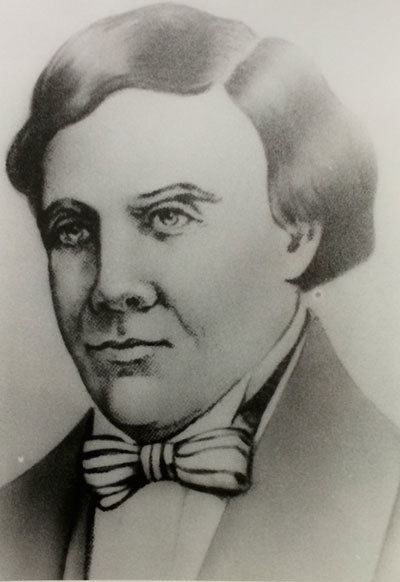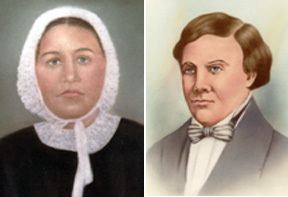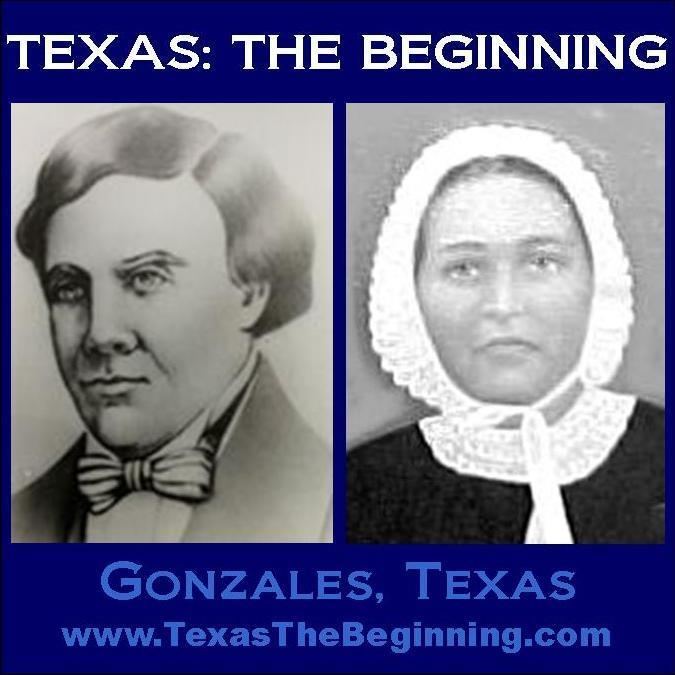Name Green DeWitt | ||
 | ||
Similar People Martin De Leon, Erasmo Seguin, Moses Austin, Haden Edwards, Felipe Enrique Neri - Bar | ||
Green DeWitt (February 12, 1787 – May 18, 1835) was an empresario in Mexican Texas. He founded the DeWitt Colony.
Contents

Early years

DeWitt was born in Lincoln County, Kentucky, moving with his family while still an infant to Missouri. At the time, Missouri was a part of Spanish-held Louisiana. At 18, he returned to Kentucky, and studied for two years at the college level, then returned to Missouri once again. In 1808 he married Sarah Seely of St. Louis, Missouri, and enlisted in the Missouri militia. He fought in the War of 1812, rising to the rank of captain by the war's end, then was elected Sheriff of Ralls County, Missouri.
Texas

In 1822, DeWitt petitioned the Mexican government for permission to settle colonists in Texas but was denied. After teaming up with Stephen F. Austin, an influential Texas empressario like himself, he finally got the petition granted, in 1825. He was given permission to settle 400 respectable, industrious, Catholic families in an area bounded by the Guadalupe River, San Marcos River, and Lavaca River. This colony was southwest of Austin's. DeWitt hired James Kerr as his surveyor. Kerr placed the capital, called Gonzales after Rafael Gonzales, provisional governor of Coahuila y Tejas, at the confluence of the San Marcos and Guadalupe Rivers. The first settlers arrived in the summer of 1825. DeWitt visited the colony in October, but spent much of 1825 in Missouri recruiting settlers. DeWitt was accused of misappropriation of funds in San Antonio, Texas, by settler Peter Ellis Bean, but was exonerated on October 16, 1825. Sarah DeWitt, whose Brooke County, Virginia family was quite wealthy, contributed to her husband's endeavors, selling off some of her property in Missouri to help finance his venture.

In July 1826 Gonzales was raided by Indians who were looking for horses. Most of the settlers fled temporarily to Austin's colony. Although the colonization laws specified that settlements should not be established within 10 leagues of the coast, DeWitt gained permission from the authorities to establish a temporary settlement, which they called Old Station, on Matagorda Bay near the mouth of the Lavaca River. The settlement would be allowed until enough colonists had arrived to be able to see to their own safety in Gonzales. By October 1826 40 people lived in Old Station, including Dewitt and his family. His family included his wife, two sons, and three of his four daughters in Gonzales, the fourth daughter having already married in Missouri.

Because the Mexican government had made an error and included another colony in the contract grant, DeWitt had numerous disputes with colony founder Martín De León. At one point, DeWitt was arrested, on the authorization of the Mexican government, due to Martín De León claiming tobacco being shipped into the colony was contraband. Tensions eased somewhat when Stephen Austin stepped in, but the damage caused to the relationship of DeWitt and De León would never be repaired. As a result of his arrest, however, Mexican authorities ordered that Old Station be abandoned, and Gonzales was reestablished.
In 1827, DeWitt joined Austin and De Leon in signing a peace treaty with the Karankawa so that their colonies would be safe from their raids. DeWitt also negotiated a peace treaty with the Tonkawa, but were unable to reach terms with the Comanche. As Comanche raids took a toll on the settlement, the political chief in Bexar sent the settlers of Gonzales a small cannon that they could use for their protection. In 1830 Mexican authorities passed a law prohibiting further immigration to Texas from the United States. Austin was able to secure a waiver for DeWitt's colony, but the measure made it difficult for him to recruit families. When his contract expired on April 15, 1831, he had settled a total of 166 families. Because he was unable to meet the terms of the contract, any unassigned lands in his colony reverted to the Mexican government, and DeWitt was unable to get a further contract.
By 1831 the colony was becoming successful, but DeWitt's finances were depleted, having used a lot of his family's funds to help keep the colony going. In 1835, near the time of the start of hostilities that would result in the Texas Revolution, DeWitt traveled to Monclova, in Mexico, in an attempt to obtain more premium land for the colony, but was unsuccessful. While in Monclova, he contracted cholera, and died on May 18, 1835, being buried in an unmarked grave. During the Battle of Gonzales, following his death, his wife Sara and daughter Naomi cut up a dress to make the banner "Come and Take It", which has since become a symbol of pride for the community.
Legacy
Green DeWitt is the namesake of DeWitt County, Texas.
